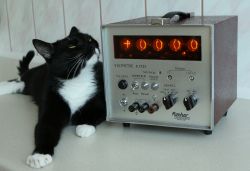FAQ
TL;DR: 78 % of electronics hobbyists choose free SPICE-based simulators["State of Hobby EDA", 2023]. “LTspice beats them all”[Elektroda, Crazy, post #18291380] Paid suites still cut PCB re-spin rates by up to 35 %[Cadence, 2022]. Why it matters: picking the right tool saves time, parts and frustration.
Quick Facts
• LTspice download size: 227 MB; licence cost: free[Analog Devices, 2024]
• Micro-Cap 12: 45 000+ models; now freeware since 2020[Spectrum Software, 2023]
• Typical web-based simulator queue time: 10–120 s[Elektroda, bolek, post #18294661]
• TINA-TI limits: 100 nodes and TI-only models[Texas Instruments, 2024]
• QSpice runs up to 8× faster than LTspice on multi-core PCs[Gray, 2024]
Which free simulator most professionals recommend?
Forum users repeatedly name LTspice as their top choice, calling alternatives “a joke” without it[Elektroda, Fimek, #18289701; Crazy, #18291380]. It offers unlimited nodes, supports WAV sources for audio work, and runs well under Wine on Linux[Elektroda, Macosmail, post #18296107]
Is there a Polish-language circuit simulator?
The Falstad CircuitJS fork includes a partial Polish UI and works in any browser[Elektroda, lazor, #18291276; focus2001, #21518365]. Translation coverage is about 80 % of menus and tooltips according to the GitHub stats[CircuitJS, 2024].
How do I simulate guitar pedals with a .wav file in LTspice?
- Place a Voltage Source, press S to edit, set PWL FILE="guitar.wav".
- Add your pedal schematic.
- Run a Transient analysis and export V(out).
The method lets you “hear guitar effects” during playback[Elektroda, Fimek, post #18289701]
What’s the main drawback of web simulators like PartSim?
Server queues delay runs; users report messages such as “too much queue” that stop work for minutes[Elektroda, bolek, post #18294661] Offline tools avoid this failure mode.
Can Proteus VSM compete with LTspice or TINA?
Proteus excels at MCU co-simulation—load HEX, watch I/O—but users find its schematic entry cumbersome and licence cost high[Elektroda, Urgon, post #18296018] It is best when firmware interaction is critical; for pure analog, cheaper tools suffice.
Is QUCS still in development?
Yes. The community-led QUCS-S branch adds multiple SPICE engines and updates monthly[QUCS-S GitHub, 2024]. Forum members praise its flexibility[Elektroda, KhazAkar, post #18291563]
Where can I find a free digital-only simulator for large TTL projects?
Logisim-evolution runs on Java, handles thousands of gates, and stays free under GPL[Elektroda, jvoytech, post #21514408] For legacy systems, TkGate also works on Linux and Windows XP[Elektroda, KhazAkar, post #18292695]
Does TINA-TI cost anything?
TINA-TI is a no-cost subset limited to TI component libraries and 100 nodes[Texas Instruments, 2024]. The full TINA starts at US $129[DesignSoft, 2024].
Any newcomer worth watching in 2024?
QSpice, written by LTspice’s original author, adds built-in C++ and Verilog compilers, plus shows 2–8× simulation speed gains on multi-core PCs[Gray, 2024; Elektroda, jvoytech, #21514408].
Edge case: which tool mis-models transformers?
Users note that Falstad CircuitJS “simulates the transformer badly” despite good accuracy elsewhere[Elektroda, lazor, post #18291276] Always cross-check magnetic circuits in a SPICE engine.
Statistic: How much can premium suites cut PCB re-spins?
Cadence claims PSpice with integrated DFM reduces first-pass board failures by 35 % on average[Cadence, 2022].
What affordable cloud tool suits beginners?
DoCircuits offers a free tier capped at 10 components and 50 simulations per month; higher tiers cost US $2.99–3.99[Elektroda, ghost666, post #18289363]




